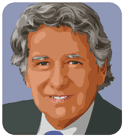The conversation on the need to tackle the U.S. deficit and debt issues as well as the debate on same-sex marriage that is recognized by some individual states, brings to the forefront the way the American federal system is functioning. Looking at how the model works here and elsewhere may actually help in finding solutions to current problems.
Federalism is the common trait within North American nations. While defined as the establishment of two or three levels of government—a central entity and subnational (or federated) state—the application of federalism differs from country to country.
The principal rationale for adopting the federal form of government is to reconcile diversity and identity with a desire for unity within a nation-state. While no one can claim that a federation is a superior form of government, it has shown in many instances to be flexible and innovative when associated with a strong democratic political culture. Some of the most prominent federal countries outside North America—Australia, Germany, Belgium, Switzerland, Austria, India, and Brazil—have demonstrated a capacity for stability and growth.
This being said, many federations have had to undergo transformations to accommodate new realities. While some have been of the constitutional variety, most changes are of the administrative kind. The creative tensions inherent in a federal structure can best be dealt with when combined with healthy and intense political discourse and debate. A study of the Canada and Quebec model, while still very much perfectible, is a good case in point.
In recent decades, Quebec has had a democratic sovereignty movement that has forced a showdown between province and country on two occasions (1980 and 1995). Despite these legitimate inherent tensions, Quebec has over the years attempted to make the federal connection more productive and more responsive to its goals and needs. After all, it was the challenge inherent to Quebec when it advocated a federal structure at the birth of the Canadian nation.
Administrative agreements on immigration (1978 and 1991), manpower training (1997), healthcare funding (2004), reform and participation in international forums (Organisation internationale de la Francophonie, Organization of American States and UNESCO) have created a modern form of asymmetrical federalism that has fostered Quebec’s identity and has not put into question Canadian unity.
Quebec was also the originator of the Council of the Federation which has allowed greater cooperation and coordination among Canada’s federated states and with the federal government. Finally, Quebec has obtained formal recognition as a nation within Canada, and now has an international presence in areas of its jurisdiction (economic development, culture and immigration) as well as those it shares with the central government.
These are illustrations about how the federal idea can evolve and accommodate the desire for change and adaptation. They can serve as model to other countries engaged in reconciling conflicting identities and agendas, or in dealing with how the relationship within existing federal countries can be reformed.
In addition, with the push for democratic reforms sweeping certain parts of the world such as the movements in the Arab Spring, the promise of the federal idea becomes even more appealing in providing a formula to make emerging democratic regimes more functional. After all, there are numerous examples of success to draw from throughout the world.
*John Parisella is a guest blogger to AQ Online. He is Québec’s delegate general in New York, the province’s top ranking position in the United States.




